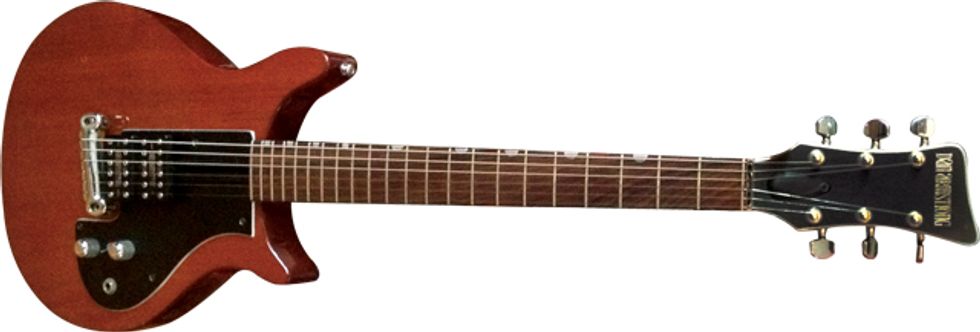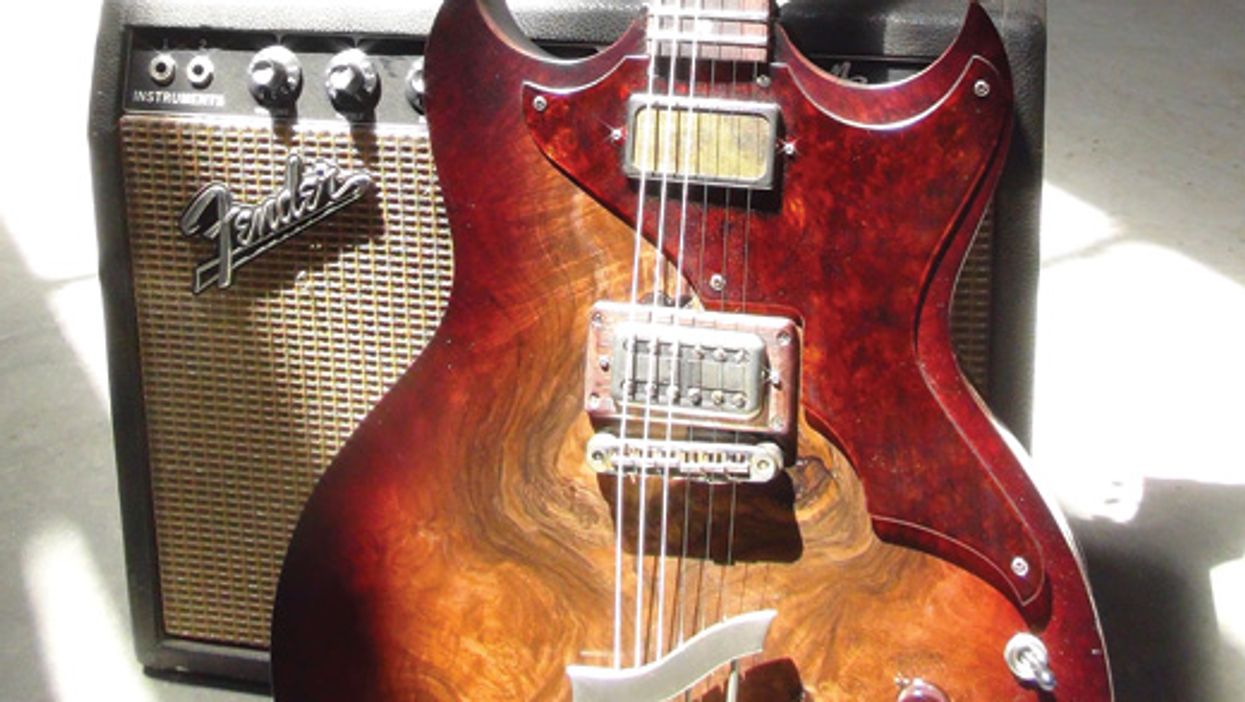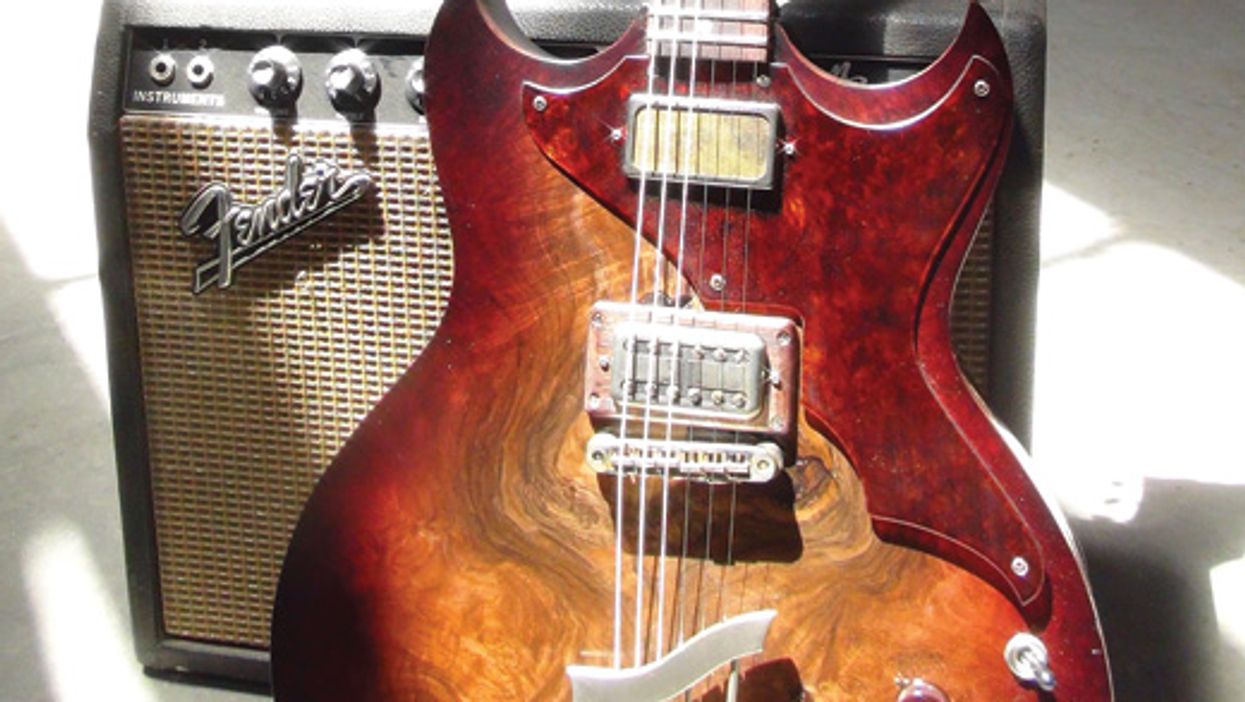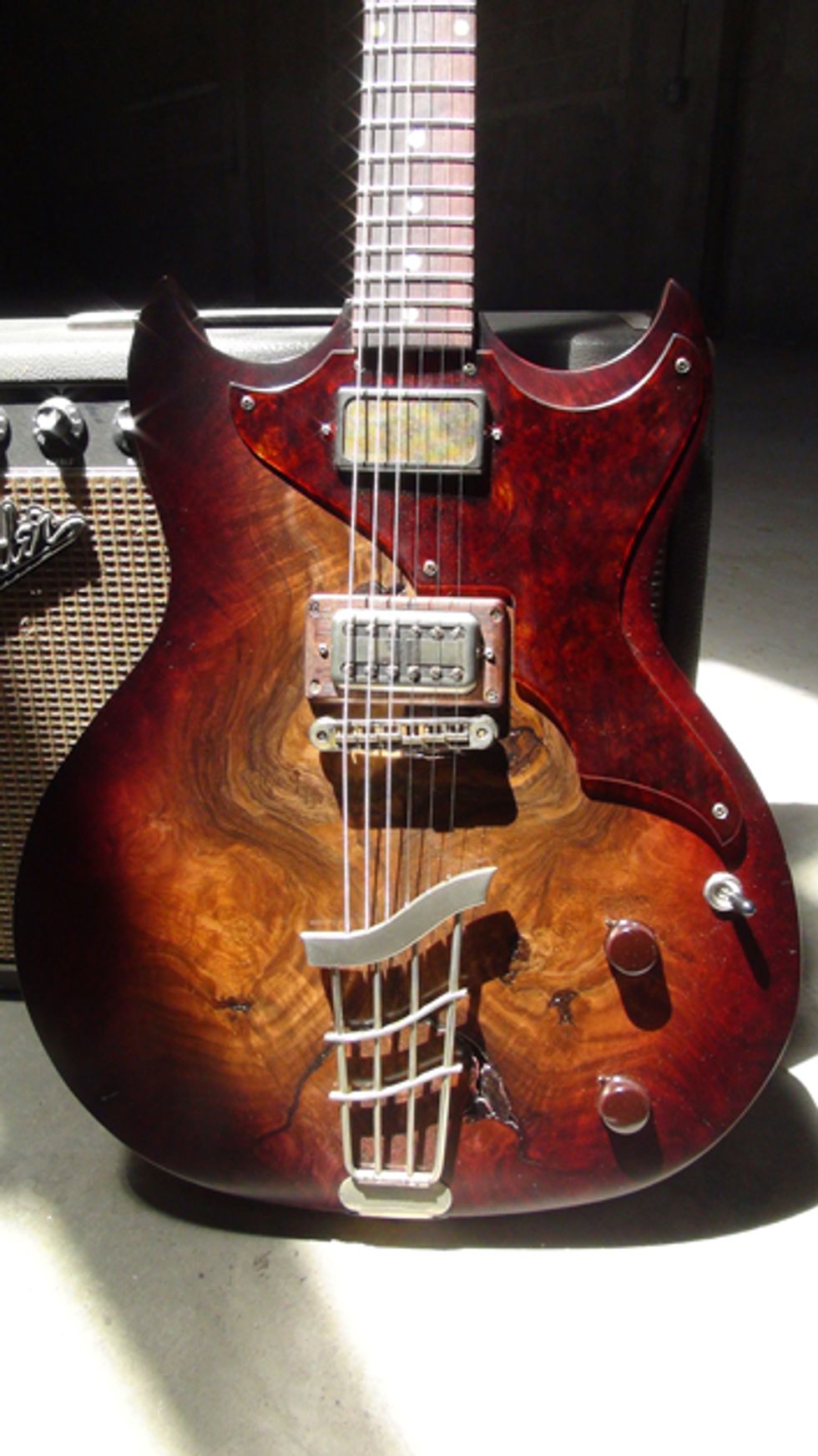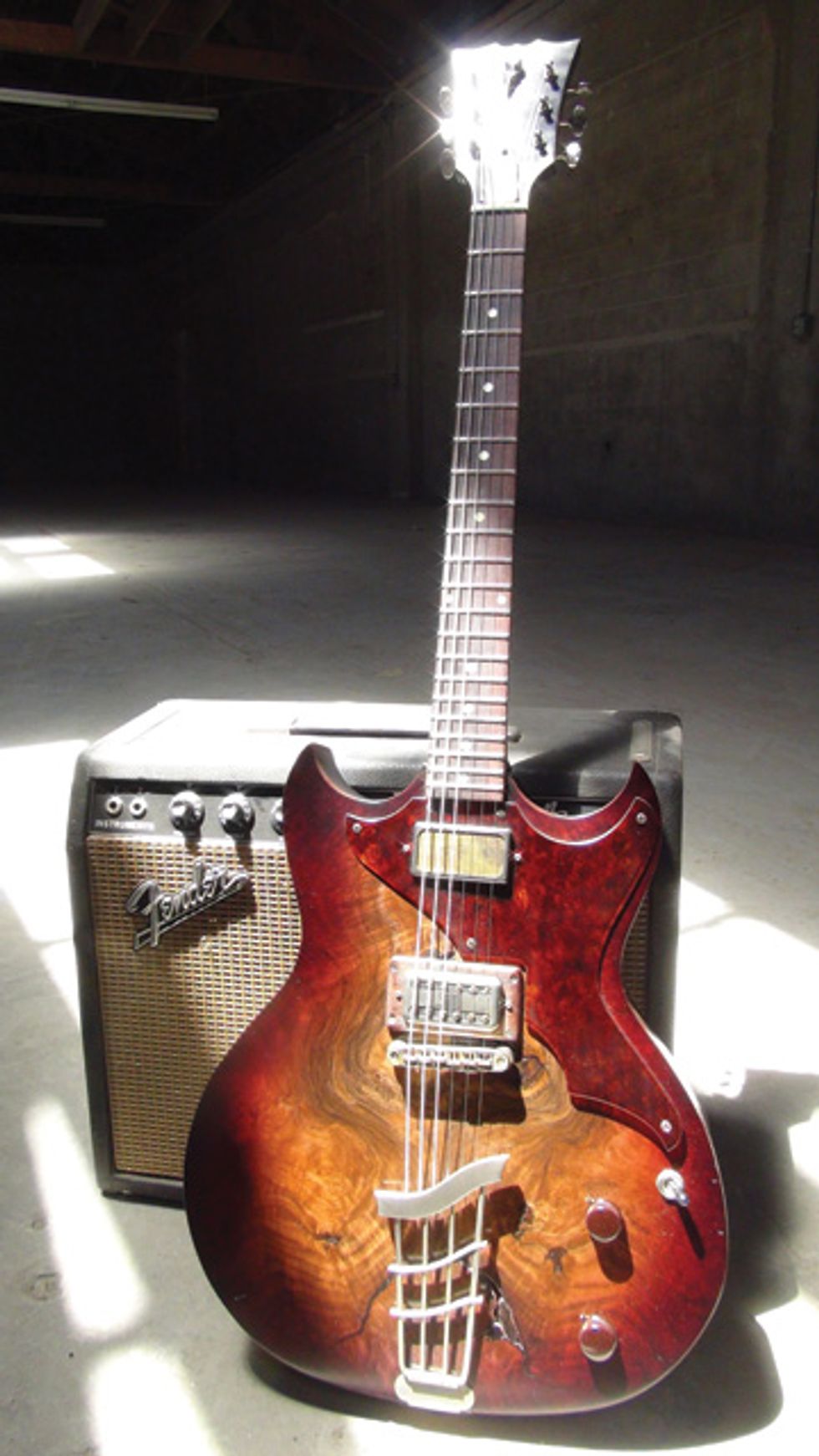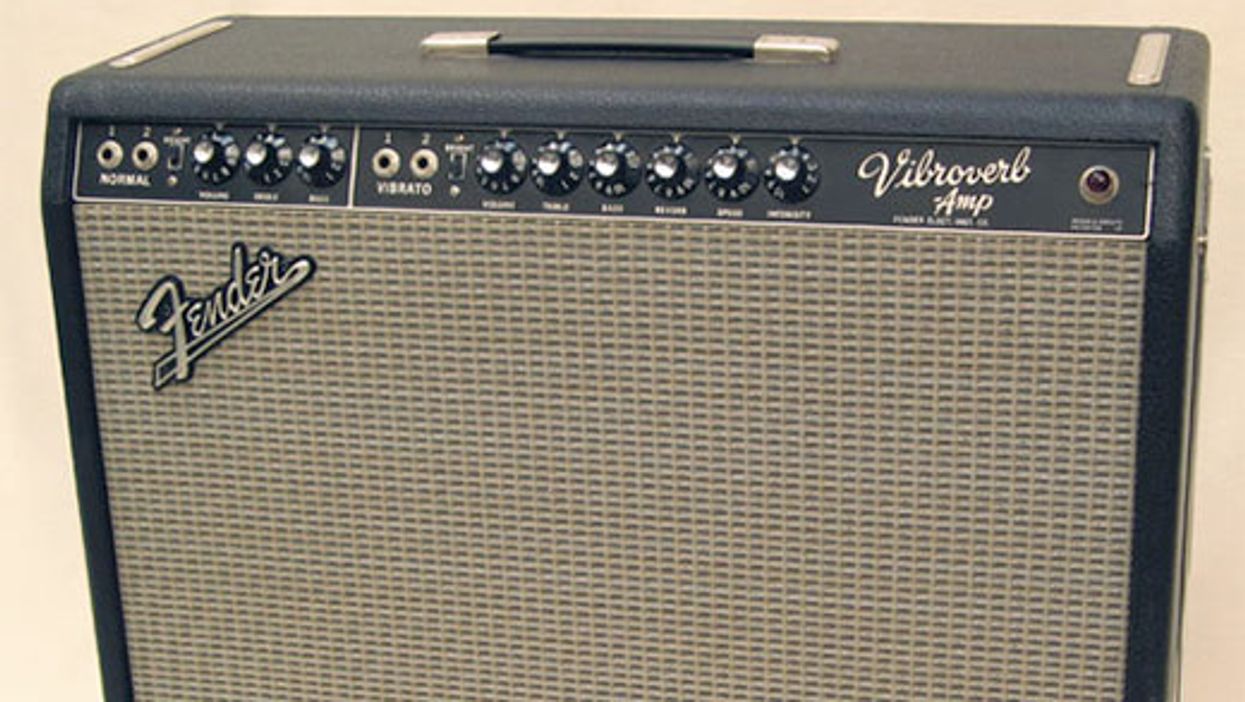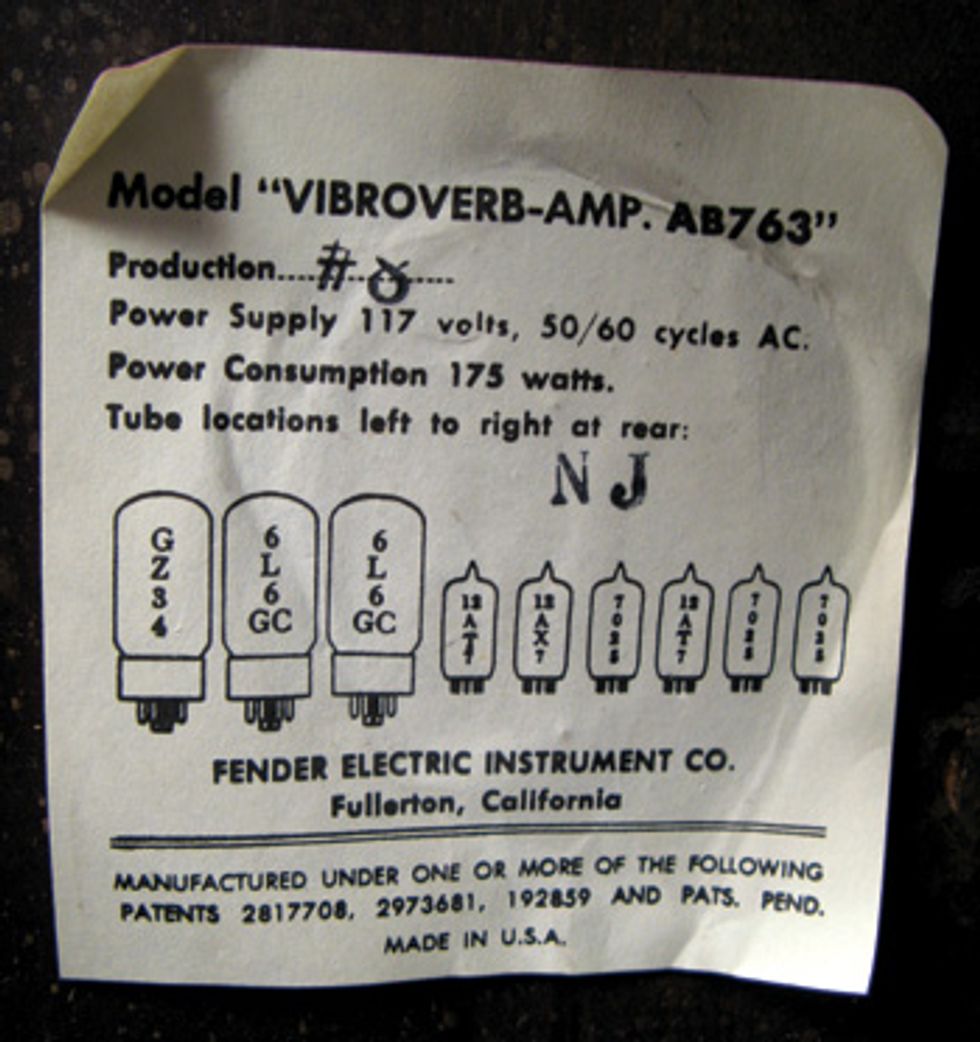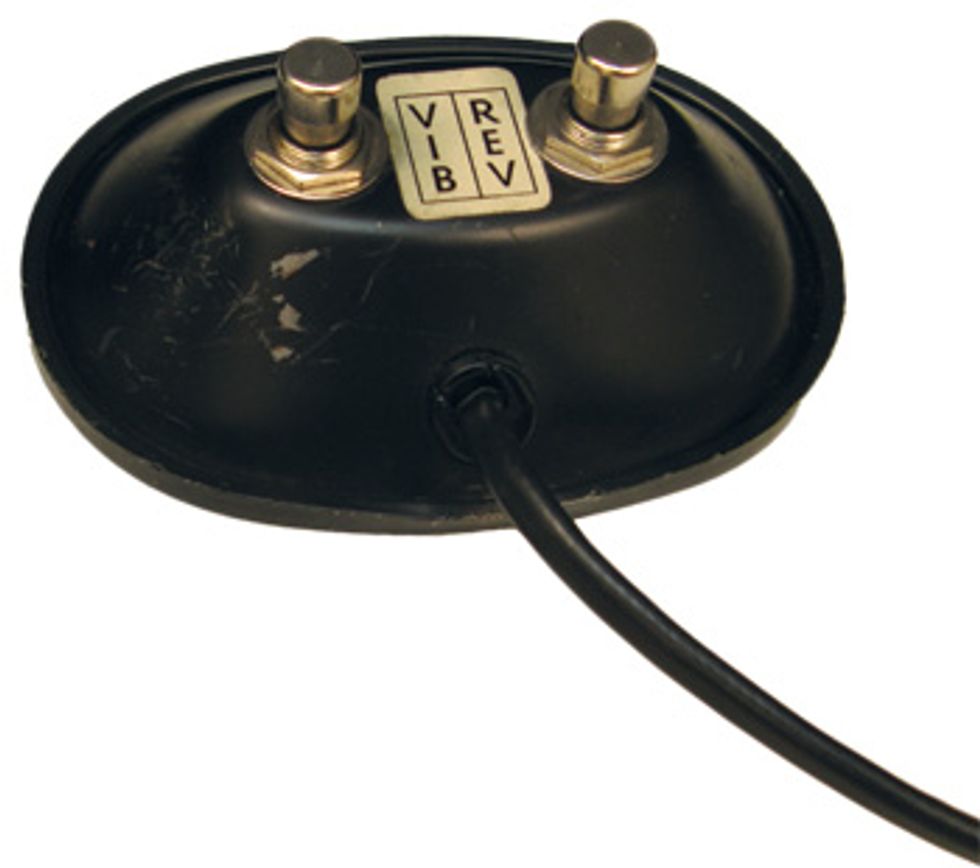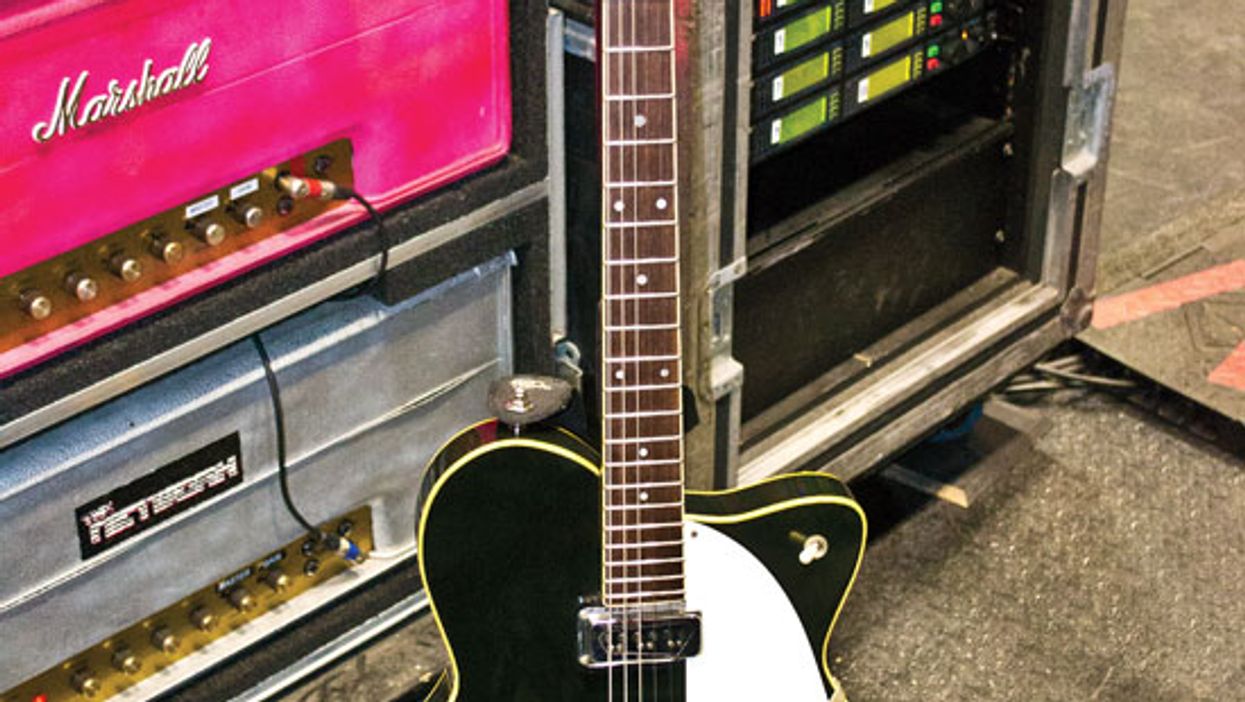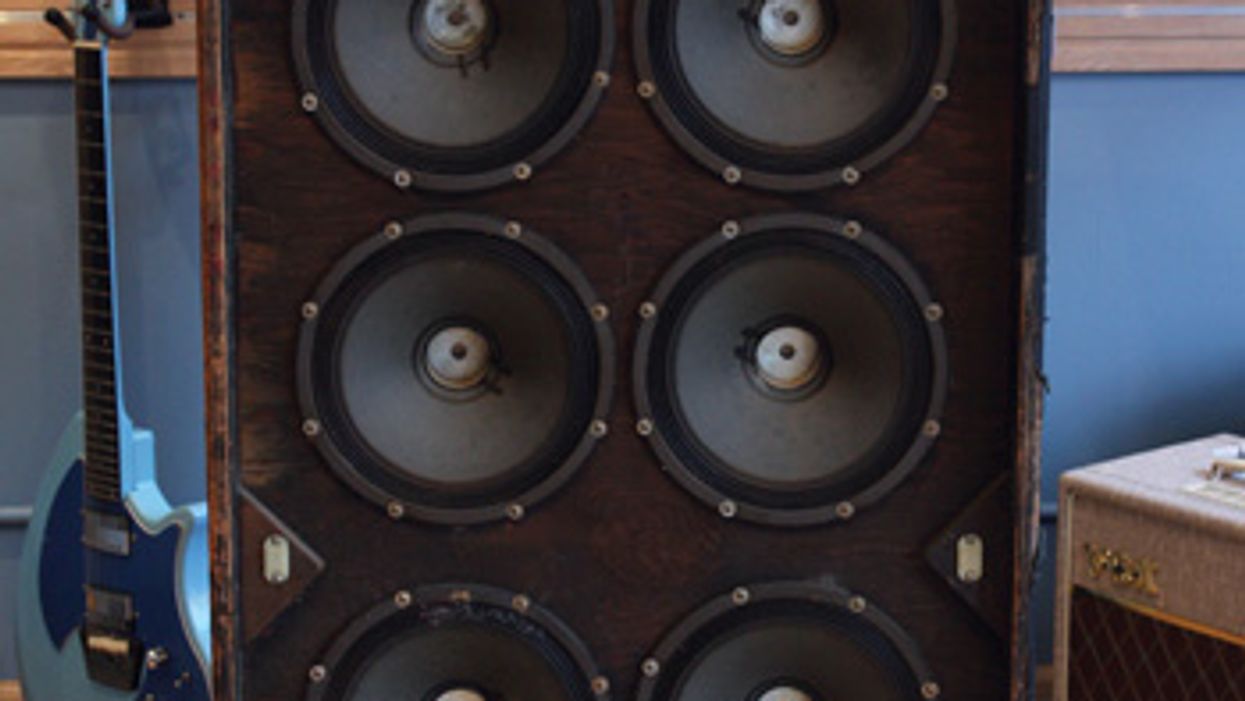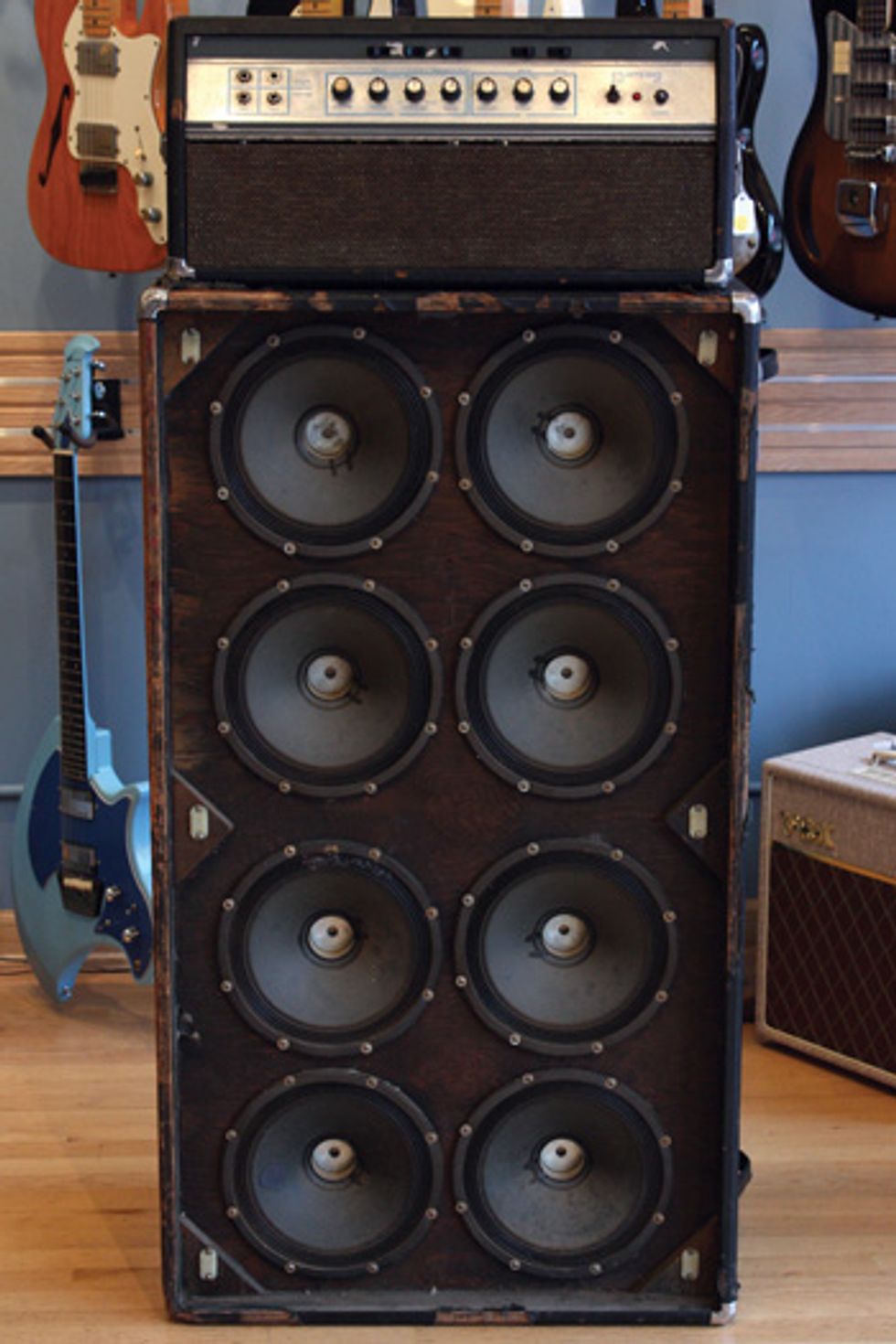Dan Armstrong was a brilliant, ambitious inventor who, like many gifted minds before him, became easily distracted with new ideas. Throughout his 64 years, Armstrong designed acrylic-bodied guitars for Ampeg, movable pickups for his own guitars, and graphic EQs for his Dan Armstrong bass amps, in addition to collaborating on bass and guitar amps for Ampeg and Fender, respectively, and launching his own line of effects pedals. In his spare time, he played studio sessions and live shows alongside Van Morrison and Carly Simon in the late ’60s.
Armstrong started honing his luthiery skills at Carroll Music. Owner Carroll Bratman hired him because he always returned the equipment he rented in better shape than when it left the shop. In 1965, Armstrong opened his own Dan Armstrong’s Guitar Service on 48th Street in New York City—across from Manny’ Music. The shop specialized in Danelectro upgrades and amp- and guitar-wiring mods. After a few years there, he was forced to relocate to Greenwich Village to accommodate the expansion of Rockefeller Center, and that’s when he changed the name to Dan Armstrong Guitars. Matt Umanov joined up and the two drafted prototypes for the Ampeg Dan Armstrong see-through acrylic instruments. On the heels of the relationship with Ampeg, Armstrong closed his NYC shop and moved to London for a brief stint with Orange. Then, in 1971, with the help of his son Kent Armstrong and Tony Pitt, Dan constructed the London Series instruments.
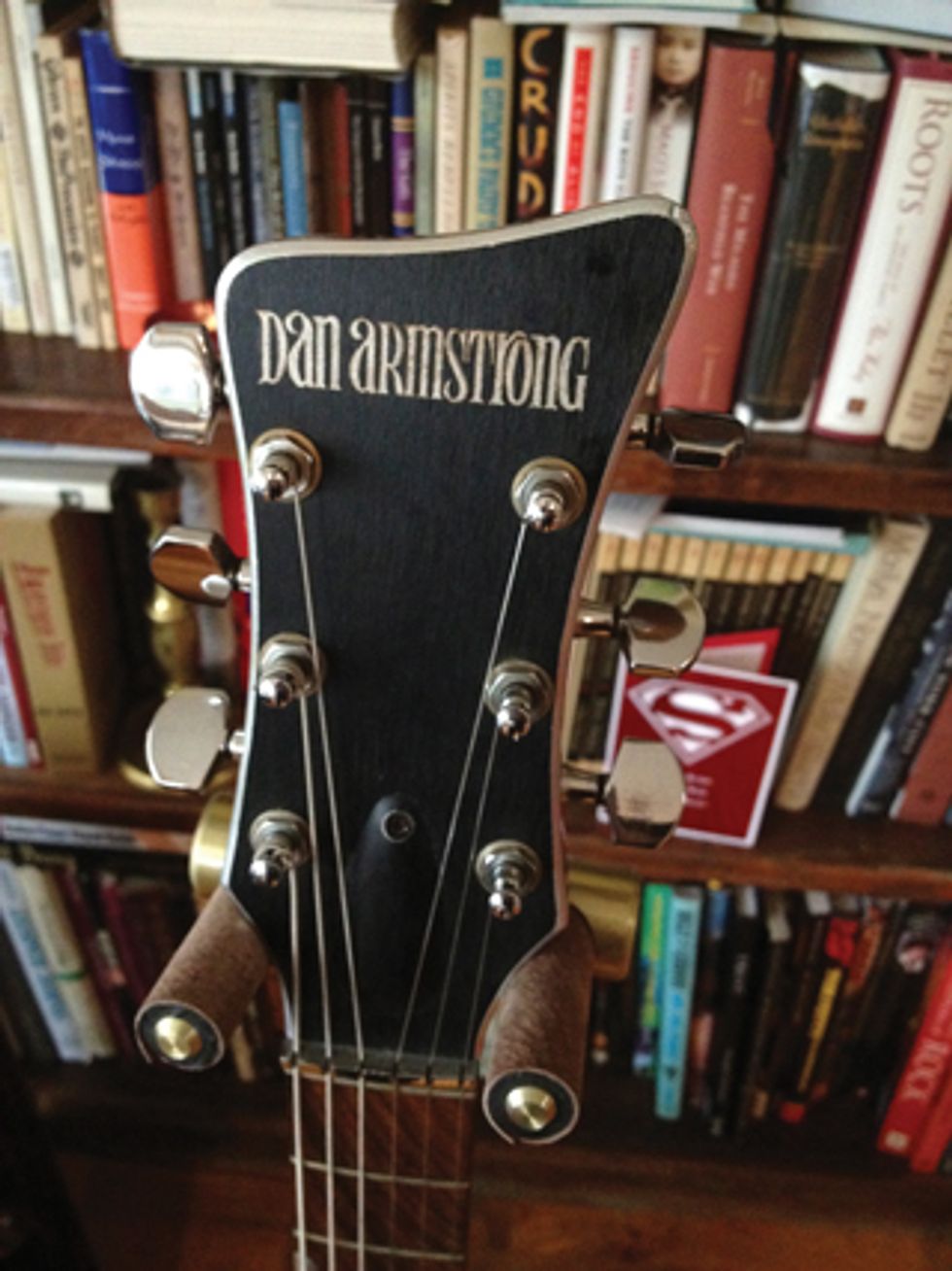
The 1972 London shown here features a Honduran mahogany body similar to the Ampeg Dan Armstrong Plexi model, which is reminiscent of a ’50s Les Paul Jr.—Dan’s favorite guitar. The neck is also Honduran mahogany, while the fretboard is rosewood. Both were contracted out to carpenter Ian Halsey. “The solid, fat mahogany body gives the guitar a thick, raw sound much like a ’57 Les Paul Jr.,” says Chris Gray, owner of this London. “The neck carve is also very vintage, like a Jr., making it one of the most comfortable necks I’ve ever played.” Quality woodworking aside, Dan’s main focus was the instrument’s bridge, pickups, and wiring.
The cast-aluminum wraparound bridge looks like a ’50s-style tailpiece, but is fully adjustable and is connected to an aluminum ramp running from the bridge to where the fretboard meets the body. The ramp houses two Armstrong humbuckers, both of which can be moved all the way from the bridge to the neck and anywhere in between. (Most London models featured only one pickup and had a natural wood finish, however, later London models started incorporating production changes like the second humbucker seen here and different finishes, like white, green, black, and more.)
The guitars were wired so that when the tone control was all the way up, it would short-circuit half of each pickup, making it essentially a single-coil and brightening the sound beyond the 10-setting on the tone control. The low-impedance pickups use a transformer housed in the guitar’s control cavity to adapt the signal to high impedance for use with an amp. To keep the pickups lean and mean, the Armstrongs created thin pickups by using 38-gauge wire. And while original two-pickup London models didn’t come with a pickup selector, the guitar shown here features one that was added later as a mod.
“I have a ’69 Ampeg Lucite Dan Armstrong that I play slide with a lot,” says Gray. “But it turns out this London rivals it for slide work—it has its own special sound past the 12th fret, because of the added harmonics when the front pickup is up against the neck where the 24th fret would be.”
A special thanks to Chris Gray and danarmstrong.org for the opportunity to feature this fine piece of gear and its story.


